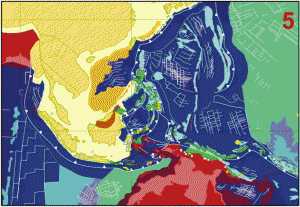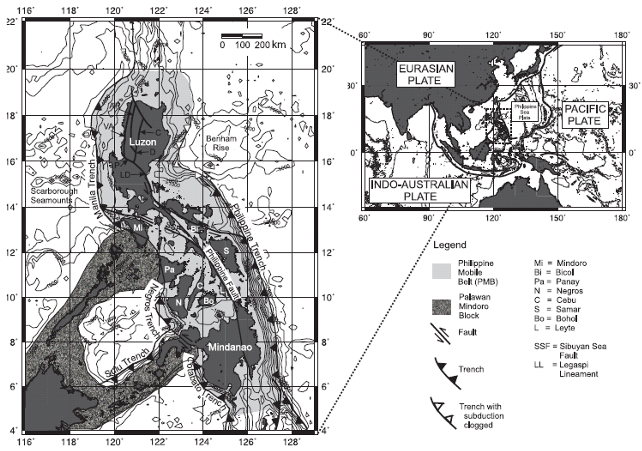Difference between revisions of "The peopling of the Philippines: theories, literature, evidence"
(→Sources) |
(→Sources) |
||
| Line 20: | Line 20: | ||
* [http://searg.rhul.ac.uk/current-research/research-by-topic/plate-tectonic-reconstructions-models/ SEARG Plate Tectonic Reconstructions – Models] | * [http://searg.rhul.ac.uk/current-research/research-by-topic/plate-tectonic-reconstructions-models/ SEARG Plate Tectonic Reconstructions – Models] | ||
| − | * New Definition of Philippine Plate Boundaries and Implications to the Philippine Mobile Belt [https:// | + | * [https://www.researchgate.net/publication/280113345_New_Definition_of_Philippine_Plate_Boundaries_and_Implications_to_the_Philippine_Mobile_Belt New Definition of Philippine Plate Boundaries and Implications to the Philippine Mobile Belt] |
| − | + | * [https://agupubs.onlinelibrary.wiley.com/doi/full/10.1002/2016JB012923 Philippine Sea and East Asian plate tectonics since 52 Ma constrained by new subducted slab reconstruction methods] | |
| − | + | * [https://www.academia.edu/23296116/Timing_and_tectonic_controls_in_the_evolving_orogen_of_SE_Asia_and_the_western_Pacific_and_some_implications_for_ore_generation Timing and tectonic controls in the evolving orogen of SE Asia and the western Pacific and some implications for ore generation] | |
== Theories on the peopling of the Philippines == | == Theories on the peopling of the Philippines == | ||
Revision as of 01:43, 11 May 2019
Contents
General theory on the geological emergence of the Philippine islands
There are actually several theories on how the various geological (including tectonic and climatic) forces resulted in the emergence and shaping of the Philippine islands, as well as the time scales involved. These theories agree on some key aspects and conflict on others. For detailed explanation about particular theories and their ramifications, see: Geological development of the Philippine islands.
On vast time scales of millions of years, it is now well-established that tectonic plate movements shaped much of the geological structure that now underlies the Philippines. The plate tectonic reconstructions of SEARG [1] show these movements in a graphic way that is easily grasped by ordinary people.
Most geological experts are now agreed that the structure underlying the bulk of the country -- the Philippine Mobile Belt (PMB) sometimes simply called the Philippine Plate -- was created by the gradual convergence of the Philippine Sea Plate (itself just the western margin of the much bigger Pacific Plate domain) to the east, the Eurasian Plate (particularly its Sunda Block) to the west, and the Indo-Australian Plate to the south.
On relatively shorter time scales of a few million years or less, tectonic plate movements have a less dramatic impact on the configuration of the emergent archipelago. Meanwhile, on such scales, volcanism, subsidence and uplifting, and major climate changes continue to reshape particular island arcs, "land bridges", and mountain ranges whether now submerged or above sea level. In that context, the continued movement and reshaping of the Philippine land forms have greatly affected the pattern of how the country was eventually inhabited by our hominin (human and proto-human) ancestors.
Sources
- SEARG Plate Tectonic Reconstructions – Models
- New Definition of Philippine Plate Boundaries and Implications to the Philippine Mobile Belt
- Philippine Sea and East Asian plate tectonics since 52 Ma constrained by new subducted slab reconstruction methods
- Timing and tectonic controls in the evolving orogen of SE Asia and the western Pacific and some implications for ore generation

